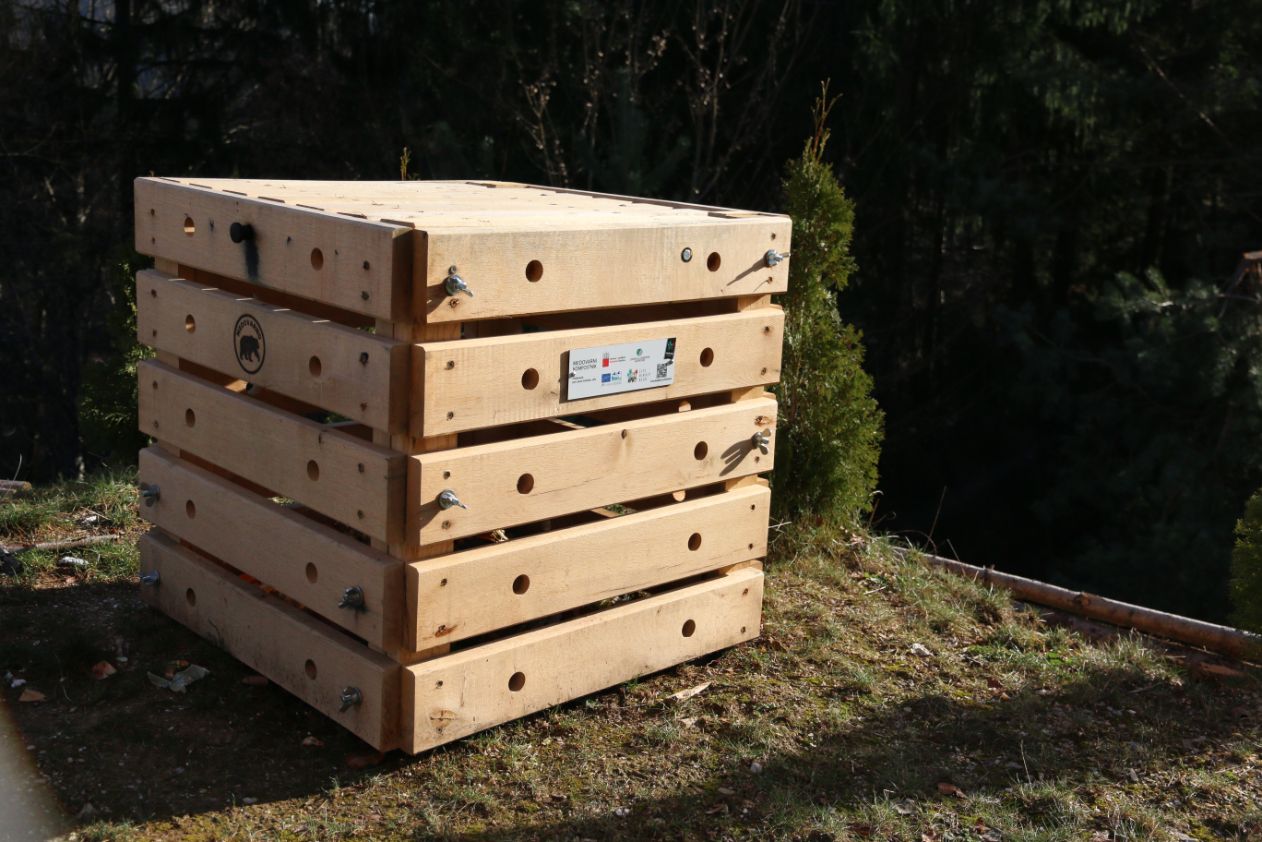Between June 16 and 21 our project team visited Romania for an exchange experience between LIFE projects. The contents of networking were focused on the exchange of experiences between two bear projects – the ongoing project Life Dinalp Bear and the finished project LifeUrsus. The exchange experience took place in the Carpathian area of Lepsa. In total 28 people from 10 different organizations from 5 countries (Slovenia, Croatia, Italy, Austria and Romania) attended the meeting. The Life Dinalp Bear project team was represented by 14 people.
During the exchange we visited many important locations for bear management, tourism and some examples of human-bear coexistence. We visited a Large Carnivore Rehabilitation Center for Large Carnivores. The purpose of the centre is the immediate assistance and rehabilitation of bears injured by different types of traps set by poachers, in traffic collisions etc. After the rehabilitation the bears are released back in the nature. The centre represents also a station for the Animal Rescue Mobile Unit.
We also visited the Tisita Natural Reserve, a touristic area with a thematic trail for large carnivore awareness raising. During the hike we had the opportunity to observe 3 specimen of Carpathian Chamois (Rupicapra rupicapra carpatica) and, more surprisingly, a female bear with 2 cubs feeding on a patch of grassy vegetation on a very steep and rocky terrain.
The hosts’ team presented us two interesting denning sites. One of them is equipped with video monitoring system, which allows the project team to monitor the bears’ denning activity in relation to the environmental factors.
We also had the opportunity to visit two livestock breeders, who use a combination of traditional and more sophisticated methods for preventing damages on livestock by large carnivores: a shepherd sleeping in a small hut very close to the electrified night enclosure for sheep, deterring devices to prevent the approach of large carnivores in the vicinity of the pasture and they also use 5-8 livestock guarding dogs to guard a vast grazing area.
We also visited a small town where habituated bears represent a touristic attraction, as they regularly visit different attractive locations, especially garbage bins, and the roam the streets on a daily basis. Until now there were no attacks on humans registered, despite people regularly observe bears feeding on garbage from close range.
Our hosts, the organization ABDC (Association for Biological Diversity Conservation), organized the meeting excellently and we would like to thank them for this great Carpathian experience!
We would also like to thank the following organizations from Romania for their guidance and their precious presentation of the Carpathian area:
EPAVN – Environmental Protection Agency of Vrancea County, EPACV – Environmental Protection Agency of Covasna County, EPAHR – Environmental Protection Agency of Harghita County and ACNV – Association for Conserving Natural Values.














